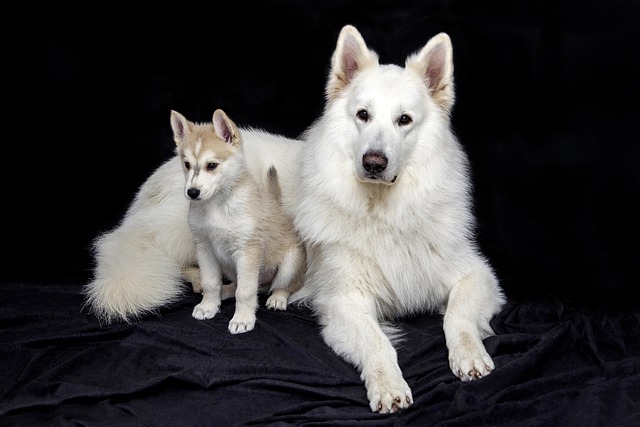
What is glaucoma in a dog?
You might notice your dog squinting more at mealtime or avoiding bright sunlight—these small changes could be early signs of a serious eye condition.
Pets are indispensable members of the family. When dogs suffer from atopic dermatitis, their owners are often anxious. How to deal with this disease scientifically and lovingly at home is the key to protecting the health of dogs. Next, I will introduce you to the methods of treating dog atopic dermatitis at home in detail.
Dog atopic dermatitis is a chronic, recurrent inflammatory skin disease caused by the combined action of genetic factors and environmental allergens. When dogs frequently scratch and bite the skin, local erythema, hair loss, and even thickening of the skin and lichenification, the owner needs to be particularly vigilant. Faced with these uncomfortable symptoms, dogs cannot express their pain in words, but can only express their pain through restless behavior. Watching them being tortured by the disease, the owner is full of heartache and worry, so it is particularly important to take action in time.
First of all, accurate identification of allergens is an important prerequisite for home treatment. Just like we have to find the enemy hidden in the dark to formulate an effective battle plan. In daily life, pollen, dust mites, mold, and certain foods may all be the "culprits" that cause atopic dermatitis in dogs. Owners can carefully observe the dog's living environment and diet, record the time, place, and symptoms of the dog's illness, and find patterns from them. For example, if the dog's symptoms worsen every time it is pollen season or after entering a room full of clutter, then the corresponding allergens should be considered. Although this may be a long and patient process, it is all worth it for the dog's health.

Dietary management plays a pivotal role in the treatment of dog atopic dermatitis, which is like building a solid line of defense for the body. We need to choose hypoallergenic prescription food, which has been specially processed to reduce the risk of allergic reactions. You can also try a diet with a single protein source, such as duck meat, fish, etc., to reduce the possibility of allergies caused by complex ingredients in food. At the same time, avoid feeding foods containing common allergens such as corn, wheat, and soy. When changing the diet, it should be gradual and give the dog's stomach and intestines a process of adaptation.
Good skin care is like putting a warm protective coat on the dog's injured skin. Regular bathing is an essential step, but be careful to use mild, non-irritating medicinal shampoo, which can effectively clean allergens, bacteria and dirt on the skin surface, and also has anti-inflammatory and antipruritic effects. Bathing frequency should not be too high, generally once every 2-3 weeks, too frequent will damage the skin's barrier function. After bathing, use a clean and soft towel to gently dry to avoid moisture in the hair and breeding bacteria. For skin areas that have already developed lesions, you can apply ointment under the guidance of a doctor, and gently massage to allow the medicine to be fully absorbed. Every application is a gentle comfort to the dog.
Cleaning the home environment is a continuous "battle" to minimize the presence of allergens. Regularly clean and disinfect the dog's bedding, toys, and eating utensils. Pet-specific disinfectants can be used to avoid residual chemicals that irritate the dog's skin. Keep the room well ventilated, dry and clean to reduce the growth of dust mites and mold. During the pollen season, try to reduce the dog's outings and avoid contact with allergens. Use a vacuum cleaner to clean the dust in the house regularly, especially the gaps in the sofa, carpets and other places where dirt is easy to hide.
Proper exercise and psychological care are also indispensable. Although dogs are physically unwell, moderate exercise can enhance their immunity, promote blood circulation, and help the skin recover. You can choose to take your dog for some relaxing walks in the early morning or evening to avoid sweating and irritating the skin due to strenuous exercise. At the same time, dogs will also feel anxious and uneasy because of physical discomfort. The owner should give more company and comfort, and let them feel full of love through gentle touch and soft comfort. A warm hug and a kind word can become the power of dogs to fight the disease.
Of course, in the process of treating dog atopic dermatitis at home, it is very important to maintain close communication with the veterinarian. Take the dog to the hospital for regular check-ups, follow the professional advice of the veterinarian, and adjust the treatment plan according to the dog's recovery. If the dog's symptoms do not improve or even worsen, be sure to seek medical attention in time and do not delay the condition.
Treating dog atopic dermatitis is a long-term battle that requires patience and love. Every careful observation, every meticulous care, and every warm companionship is filled with the owner's deep love for the dog.

You might notice your dog squinting more at mealtime or avoiding bright sunlight—these small changes could be early signs of a serious eye condition.

Let’s set the scene: It’s a sweltering Phoenix afternoon—105°F outside—and you rushed your 2-year-old Lab mix, Cooper, on a quick walk to “get it over with.”

Let’s get real: You’re in your Miami apartment, watching your 3-year-old Corgi, Loki, struggle to climb the stairs to your second-floor unit.

Many dog owners brush off occasional scratching as just “dog behavior,” but persistent itching often signals something more—like a food allergy.

You might first notice your dog scratching more than usual—chewing at their paws until the fur looks thin, or rubbing their face against the couch nonstop.

Let’s be real: You’re standing in your Chicago apartment, watching your 3-year-old Beagle, Max, huff and puff just to climb onto the couch.